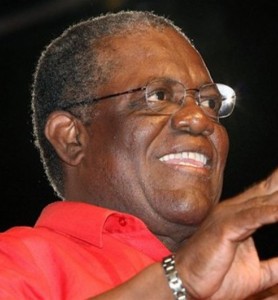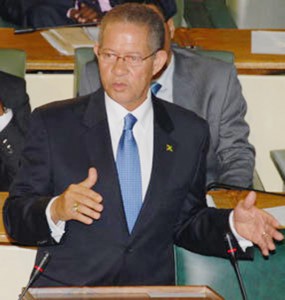When Caribbean Heads of Government met in Antigua in July they devoted the first business day of their meeting to discussions with representatives from the tourism, hotel and regional airline industries.

The meeting was a first and confirmed that Caricom had recognised the importance of the industry, its central place in the Caribbean economy and the need for concerted and rapid action to address the problems it faces.
The decision by the region’s political leadership to afford those involved in tourism the equivalent level of access as that granted to the banana and sugar industries was viewed by the industry as public recognition of the need for greater policy balance at a regional level between the requirements of services sector and agriculture. It was also taken as an understanding that any downturn in the industry’s fortunes would impact negatively on the Caribbean economy as a whole.
Although the need to pay more attention to tourism had been urged for some years the importance of having such a meeting and including tourism on all regional agendas was only formally recognised under the recent Caricom chairmanship of the Prime Minister of the Bahamas, Hubert Ingraham with strong support from Jamaica’s Prime Minister, Bruce Golding.

At the meeting in Antigua, representatives from the industry led by St Lucia’s Minister of Tourism, Allen Chastenet, and the Directors General of the Caribbean Hotel Association (CHA) and the Caribbean Tourism Organisation (CTO) spoke about the problems facing the industry; the downturn in the Caribbean’s global competitiveness; and the challenges that increasing air fares, taxation and other constraints were having on the industry.
They suggested to Caribbean heads that what was required was a regional marketing fund to increase international awareness of the region. This would be used for a sustained generic campaign supported by use of the colourful ‘Caribbean’ logo that CHA and CTO are encouraging all Caribbean producers to apply to their products.
They noted that this is an approach that in the past had proved its worth – in 1993 a series of television adverts featuring the Beach Boys significantly increased arrivals – but now required being sustained financially over a longer period if the region was to address the global competition for the tourist dollar or euro from other warm-water destinations or nations like India and China.
The meeting also heard about the need for the development of a region-wide tourism satellite accounting model to help governments, regional institutions and external donors better understand the overall contribution that tourism makes to local and regional economy. Put in plain English this is a system that would enable a fuller understanding of the true levels of demand tourism creates locally for everything from eggs to financial services.
Although some Caribbean government ministers attending the July heads meeting noted privately that the presentations made by the industry and the supporting documentation could have been better organised, the encounter enabled the representative public and private sector regional industry bodies to put their concerns directly to heads.
The Caricom communiqué subsequently stated that heads of government had agreed to a regional marketing campaign “including the adoption in principle, of a Caribbean Regional Brand and the creation of a Marketing Campaign Fund, as well as the establishment of timely and comprehensive information gathering systems which would adequately reflect the contribution of tourism to the national economies.”
It further stated that “a special meeting of the Council for Trade and Economic Development (COTED) on Tourism will be convened to examine the related modalities and report to a meeting of the Bureau of Heads of Government within the next sixty days.”
As a consequence a technical meeting will take place in Trinidad in the next few weeks that will feed recommendations into a meeting of COTED a few days later.
This is welcome not least because of the rapidly mounting number of problems the industry faces.
These include a deteriorating global economic situation; the growth of a holiday at home movements led largely by environmental concerns; international media coverage about violence against visitors in a number of Caribbean nations; swingeing cuts in airlift to the region; the collapse of a of two low-cost carriers that served the region; cruise ship diversions as a result of hurricane activity; and forecasts of a probable decline in visitor arrivals from the spring of 2009.
The new-found interest to a significant degree reflects a decision by the industry a few years back that it needed to actively develop advocacy programmes in the region and externally if it was to be better understood and receive the attention and support its economic contribution warranted.
Thus in the last few days CHA’s President Enrique de Marchena has called publicly for the Economic Partnership Agreement (EPA) with Europe to be signed and together with the industry’s Director General met European Commission officials in Brussels to consider how the EPA language on tourism could be made to work for the industry.
This proactive approach is one that few other regional industries have adopted but tourism now encompasses for example regularly briefing Caribbean ambassadors; successfully seeking bilateral funding from European governments; engaging in dialogue with the presidents of the major hotel chains such as those in Spain; and the commissioning of a study that will present in simple language details of what is on offer in the EPA for tourism.
It is a model that other commercial sectors in the Caribbean should emulate if they are to obtain a better hearing from governments and take advantage of the opportunities that will arise in the coming years from the EPA and other trade negotiations.
Previous columns can be found at www.caribbean-council.org





